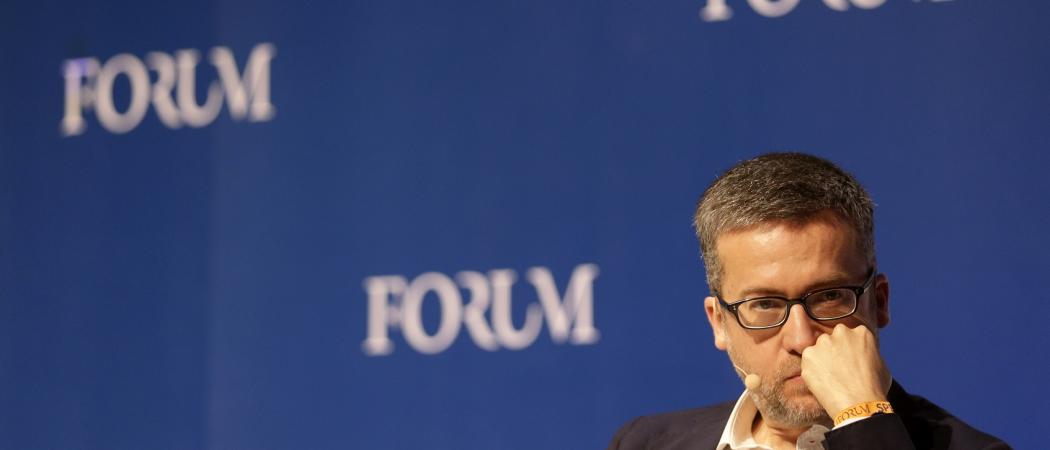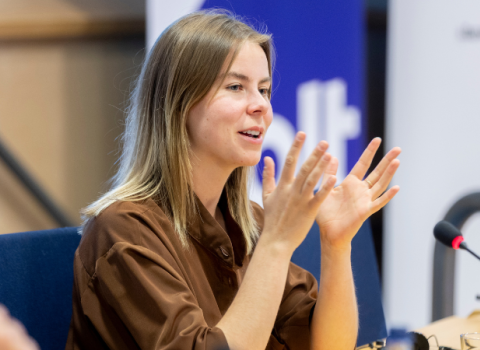A timeline of what to expect as the EU works out the details of its €94.1 billion research and innovation programme.

EU research commissioner Carlos Moedas. Photo: European Commission
On 20 March EU lawmakers reached major agreement on Horizon Europe, the EU’s next research programme. But with key details, including the budget, foreign participation, and the new missions, yet to be decided, Horizon Europe is still nowhere near confirmed.
All being well, the remaining pieces of the Horizon puzzle will fall into place over the next eighteen months or so, as at least three separate strands eventually come together. These are, the legislation itself; the long-term EU budget the programme will depend on; and the strategic planning of key details, including the programme’s clusters, missions, partnerships, and the shape of the European Innovation Council.
Horizon Europe is a proposed €94.1 billion programme for research and innovation that is intended to go live as soon as the current Horizon 2020 expires at the end of next year. On 20 March, negotiators for the European Parliament and the Council of the EU reached an important agreement on most aspects of the legislation that will establish Horizon Europe.
March-April 2019: Approving the Horizon deal
The 20 March deal covers basically all of the Horizon Europe legislation except for the budget and the participation of third countries, which will be settled alongside the EU’s long-term budget. But that deal still has to be approved by the Council and the Parliament, because it was brokered by just a few players acting on their behalf: the Parliament’s rapporteurs – MEPs Christian Ehler and Dan Nica – and the Council Presidency, held by Romania for the first half of 2019.
Three votes on the deal lie ahead in the next few weeks. The first is the Council’s private meeting of deputy permanent representatives from each member state, known as COREPER I. Then it is the turn of the Parliament’s research committee, ITRE, which meets in public. Finally, the Parliament as a whole must approve the deal at its plenary meeting in Strasbourg.
Although none of those votes have yet been tabled, the timing is so tight that they can be predicted almost to the day. COREPER I has to approve the deal in one of its two meetings on 25 and 29 March so that ITRE can vote on 2 April, its last meeting before Parliament’s final plenary meeting ahead of the May elections. The plenary will be held between 15-18 April.
The final legislation, however, won’t be adopted until next year, when the budget is settled – ratifying last week’s agreement is just a stepping stone.
Late 2019-2020: Member states must overcome budget deadlock
The Commission proposed a €94.1 billion budget for Horizon Europe, compared to €77 billion for Horizon 2020. The Parliament wants to increase that budget to €120 billion. The Council, however – which represents the member states that ultimately control the EU’s purse-strings – will eventually agree its position on the Horizon budget as part of negotiations for the EU’s overall financial plan for 2021-2027, known as the multiannual financial framework (MFF).
That’ll take quite some time. The Commission’s MFF proposal asks wealthier member states to pay more, but also cuts programmes that benefit poorer member states to put more into those where wealthier countries generally do better – like research. That means nobody’s happy. Given member states have to agree the MFF unanimously, there is unlikely to be a settlement until the end of 2019 at the earliest. Budget Commissioner Günther Oettinger is hoping for a deal in October.
The Commission has proposed to increase the EU’s overall budget from €1.09 trillion to €1.38 trillion, despite the fact the UK is leaving. That works out as 1.11 per cent of the EU’s combined gross national income, up from 1.03 per cent in the current MFF. As a result, countries that are net contributors, like France and Germany, need convincing that spending more on the EU will be worth it for them.
But the Commission’s MFF proposal also cuts cohesion funds for poorer member states and the common agricultural policy (CAP), which provides hefty farming subsidies. Cutting the CAP riles farmers throughout the EU, while eastern member states that benefit from cohesion funds obviously don’t want to see them cut.
Much of the money saved from cohesion funds and the CAP would go to research – as well as defence and the space programme. But the lion’s share of research grants go to wealthier member states to the north and the west, because they can invest in better research infrastructure and attract the best researchers, making for better grant applications.
East European governments and politicians lobbied unsuccessfully for changes to Horizon Europe that would see more research funding go their way. Substituting research funds for cohesion funds is therefore not likely to satisfy them. As for placating farmers, the Commission has proposed to increase the budget for agricultural research in Horizon Europe to €10 billion.
Foreign participation depends on budget negotiations
Which non-EU countries can participate in Horizon Europe will be settled alongside the MFF, because lawmakers want the rules for foreign association to be more-or-less consistent across different programmes.
Currently associated countries include Switzerland, Norway, and Israel. Association has non-EU countries pay into the same pot of cash that funds all Horizon programmes, allowing them to participate on an equal footing with EU member states – though the Commission pays the entry fees for some poorer associated countries, like Tunisia.
Researchers in non-associated countries, like Canada and the United States, can still participate if they bring their own money to each project – the incentive being the opportunity to participate in joint research.
Among the factors that will influence the negotiations are Brexit, a national debate in Switzerland over a new deal governing its relationship with the EU, and the forthcoming European elections, which some analysts think may deliver a more right-wing parliament than the one we have now. If that prediction turns out to be correct, the European Parliament may take a more conservative view of spending European money outside Europe, not to mention spending national money in Europe.
And a few days away from what was supposed to be Brexit day, what terms the UK will leave on, and when, remains an unknown.
Switzerland, on the other hand, has negotiated a new framework agreement governing much of its relationship with the EU, and has put the matter to a national consultation that could result in a referendum. Swiss researchers are worried that if the agreement isn’t ratified by the end of 2020, the Commission will shut them out of all programmes, including Horizon Europe.
Strategic planning will flesh-out key details of Horizon Europe over 2019
While the final legislation remains unresolved, the 20 March deal means the Commission can begin work on strategic planning, which will give Brussels lobbyists plenty to do over the rest of the year. At stake are matters such as what the goal-oriented missions will be and which companies will be able to participate in partnerships.
Strategic planning is separate from the main legislation. The Commission will submit drafts to member states’ representatives, who will either approve them or send them back for further revision.
The timeline is still hazy, but Commission sources hint that the first drafts of Horizon Europe’s strategic planning documents will start to appear around summertime, with a view to the Council adopting the finalised versions towards the end of the year. Over 24-26 September, the Commission will host a string of R&I Days, at which it will bounce ideas off researchers.
Before that, probably within the next few weeks, the Commission will put out the first calls for expressions of interest from those who want to participate on the advisory boards for the missions. The boards themselves, as well as the associations selected to help set up the intergovernmental or public-private partnerships (which are a bit like missions, only the topics are broader), probably won’t be appointed until 2020.
Missions are a new instrument intended to focus research funding on particular problems, such as cancer and ocean pollution. Partnerships are similar, but the topics are much broader, and they will be run using different models of public-private or intergovernmental collaboration. The Horizon Europe legislation sets out the topics but doesn’t actually define the missions and partnerships themselves. Strategic planning will do that.
The European Innovation Council is still coming together
Several other logistical issues also need to be settled over the next year, among them how the European Innovation Council will deliver on its promise to invest in small tech companies. The EIC is a new body aimed at helping small European tech businesses take off, in particular by making equity investments in them.
A pilot version of the EIC is already awarding grants from the Horizon 2020 budget, but the equity component – called the EIC Accelerator – can’t take off until the Commission and the European Investment Bank (EIB) set up a separate legal entity to manage the investments. However, the fact this entity doesn’t exist yet didn’t stop Carlos Moedas, the research commissioner, from formally announcing the launch of the EIC Accelerator pilot on 18 March.
Setting up the investment vehicle will take a while, as it isn’t even clear yet what form it will take, or what jurisdiction it will be constituted under, though Luxembourg is one possibility, since the EIB is based there.
Commission sources say they hope to start accepting applications for EIC ‘blended finance’ combining grants and equity in June, and to begin assessing them in September. That means, ideally, that the EIC would need to be up and running by the winter of 2019.
This article was updated on 26 March 2019 to correct an error: the plenary session is 15-18 April, not 25-28 April.
This article was corrected on 8 May to show that member states’ role in approving the strategic plan occurs through appointed representatives, not the EU Council itself.





 A unique international forum for public research organisations and companies to connect their external engagement with strategic interests around their R&D system.
A unique international forum for public research organisations and companies to connect their external engagement with strategic interests around their R&D system.